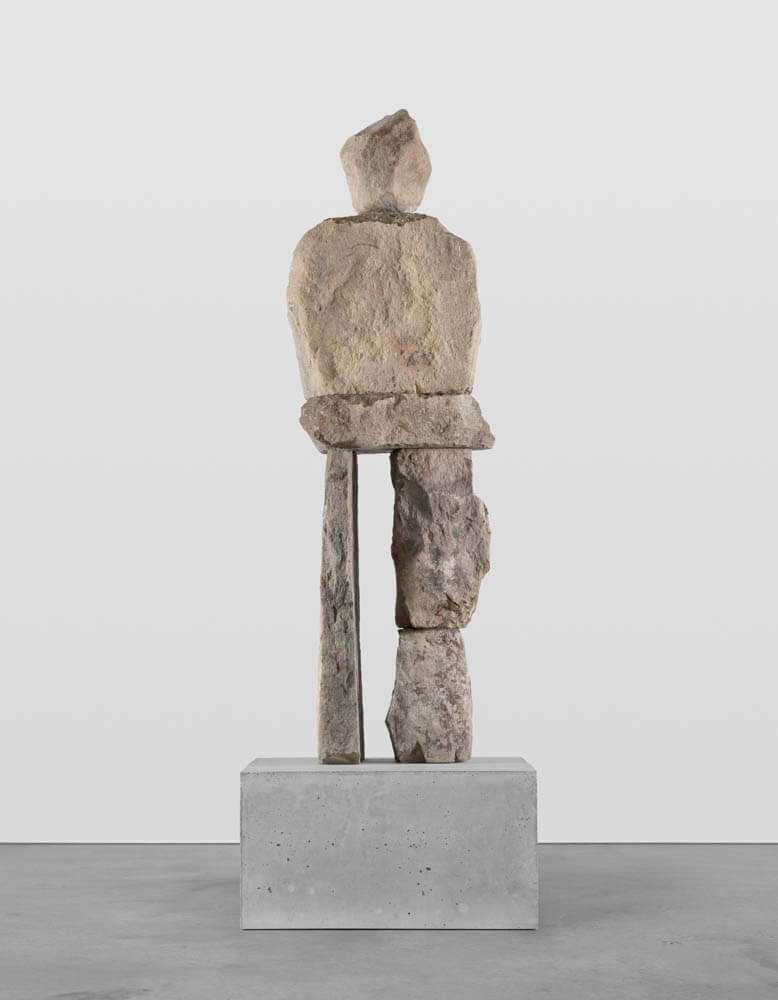
The Reassured soul can assure your doubts and raise your spirits. A protector or guardian.
Explore the works below. Before expanding the text, think to yourself:
What do you see?
What do you feel?
What might it be addressing?
What questions do you have?
Do you like it? Why or why not?
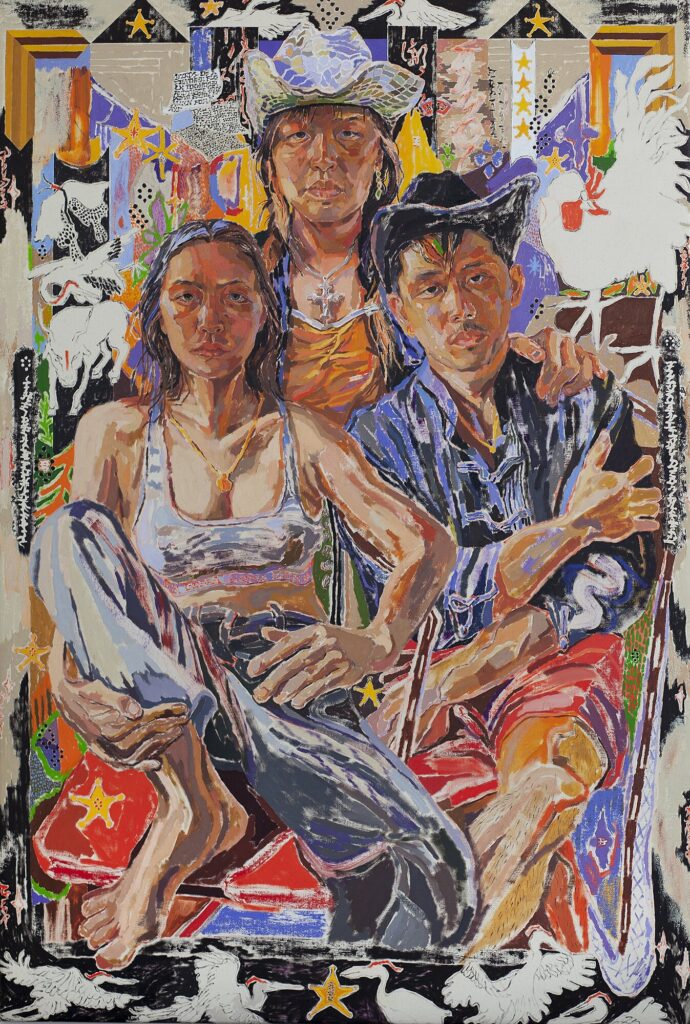
Expand to learn more
This is Birds of a feather flock together, aka: A New Family (2020)by Oscar yi Hou. Birds of a feather depicts yi Hou alongside two queer Asian women. Yi Hou describes their relationship as protective. Where men and masculinity have been historically regarded as protective, yi Hou presents these queer, feminine women as his protectors. Surrounding the figures are animals, golden starts, and text. The frame is full of cranes which are meant to represent yi Hou as his Chinese name refers to the cry of a bird. The ox and rooster may represent the two other figures. In naming this, “new family”, yi Hou investigates the ways in which queer people form new families, sometimes out of rejection by their blood families, sometimes out of the formation of deep bonds.
About the Artist
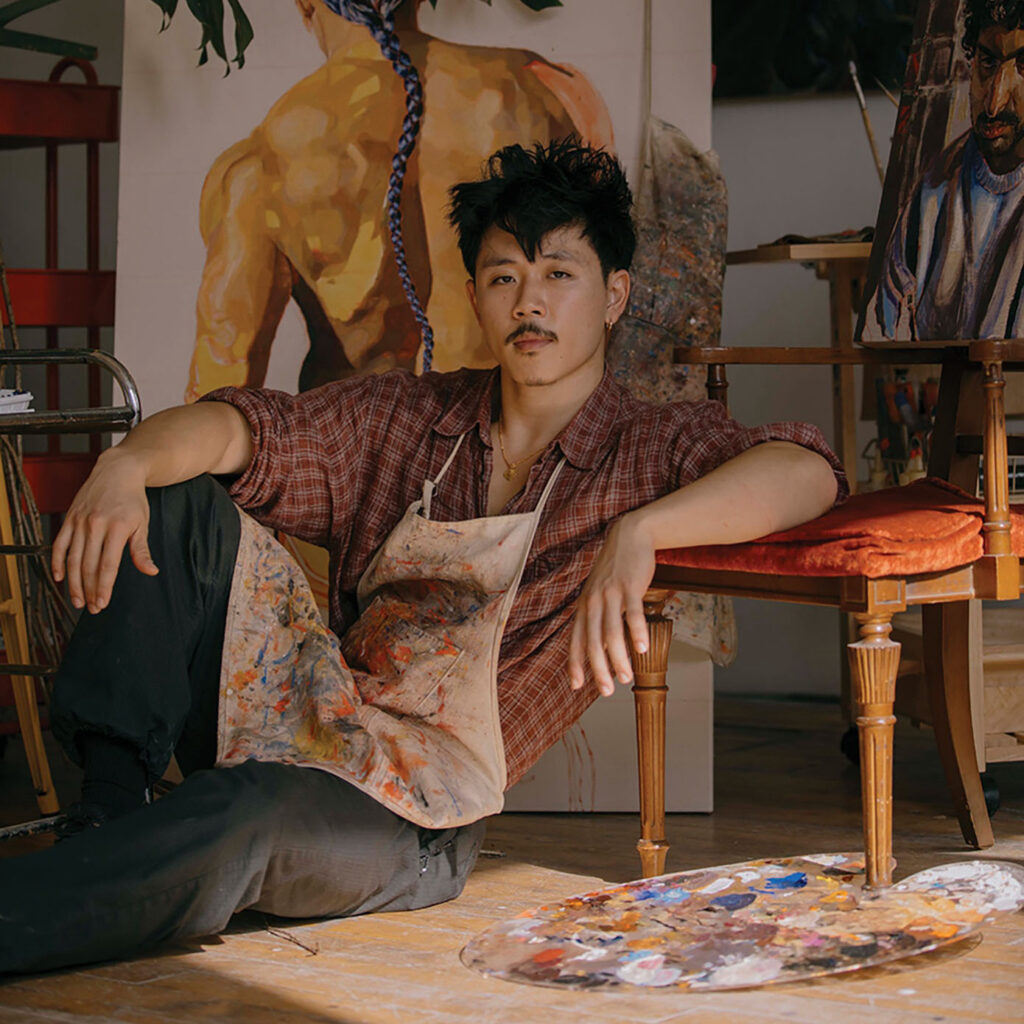
Oscar yi Hou (b. 1998) is a British-Chinese painter based in New York City. His work deals primarily with community — particularly his queer community. While his figurative works are often based in portraiture, he describes his characters as “ciphers”.
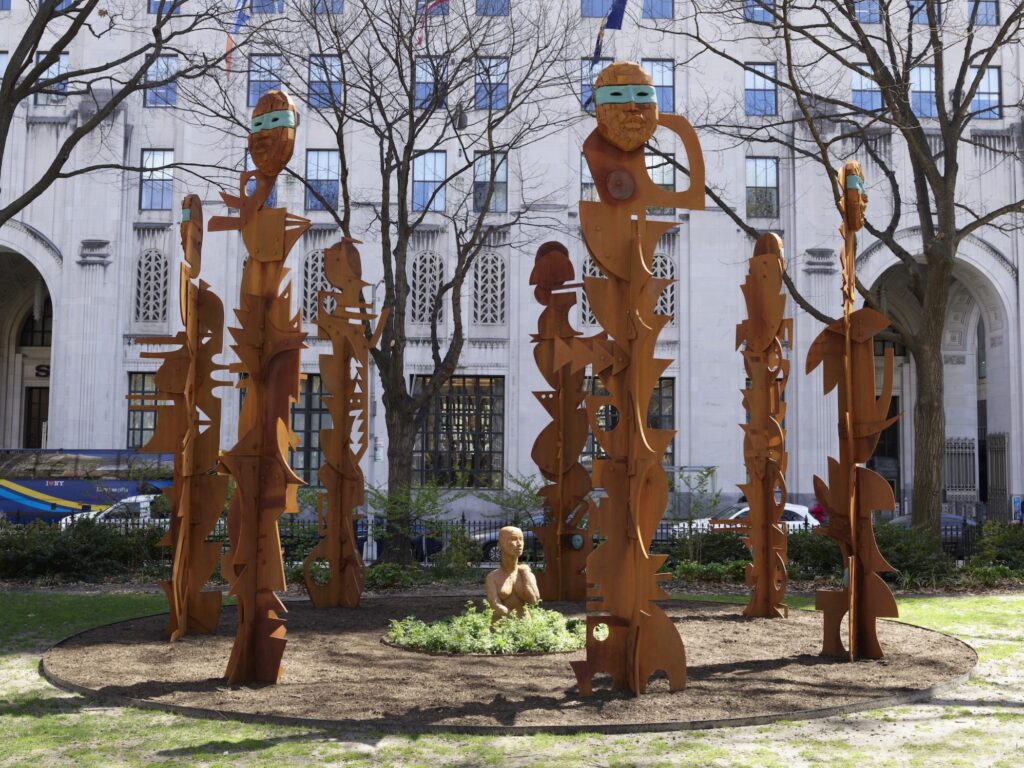
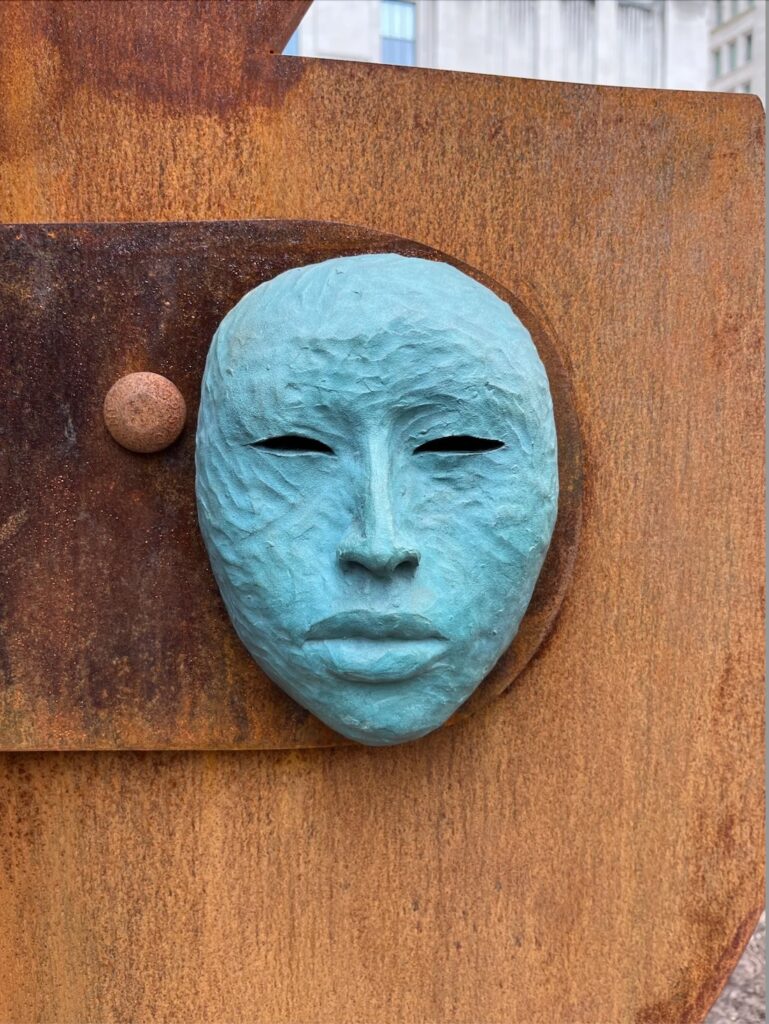
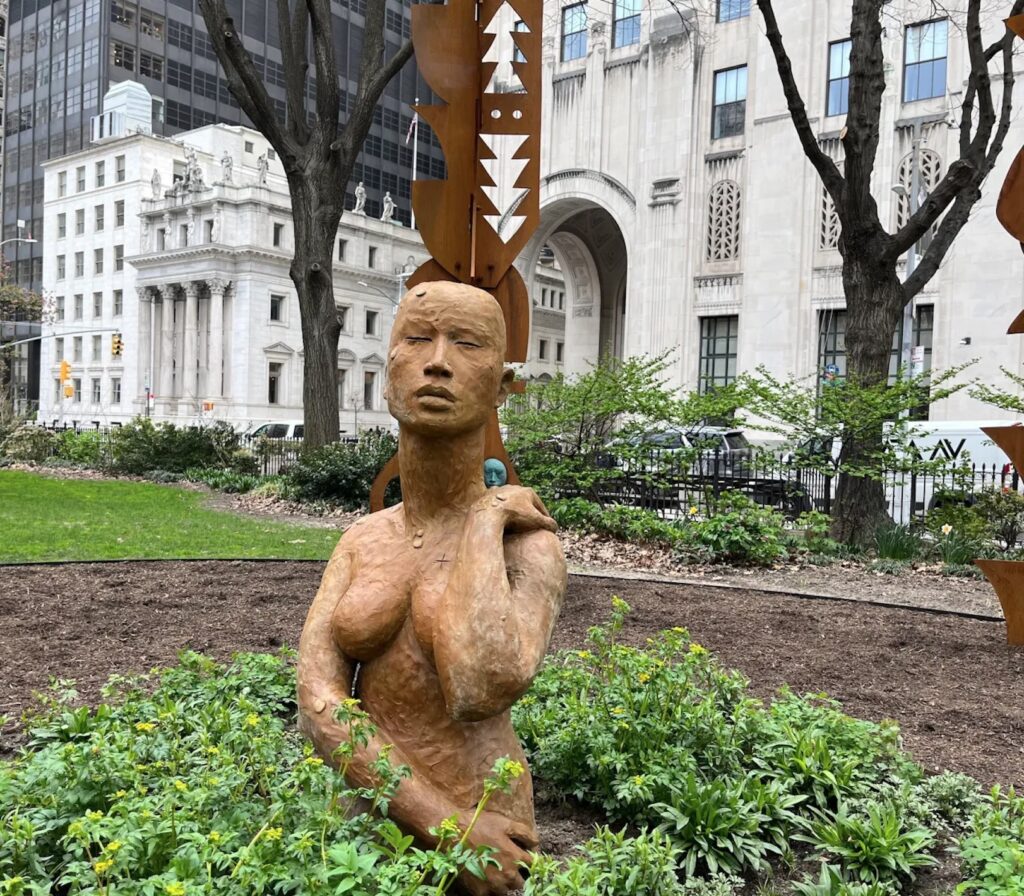
Expand to learn more
This is Seed (2024) by Rose B. Simpson, a public art installation. The installation took the form of two parts, one in Madison Square Park (featured here) and one in Inward Hill Park, both in New York City. In the Madison Square Park installation, we see seven 18-foot tall sentinels that stand surrounding a female form, half submerged in the earth. The sentinels are made of weathered steel and bronze, thin strips fashioned together to form geometric totems. Each sentinel has two faces: one facing out and one in. The ones facing out are located at the top, with blue bands across their eyes. The ones looking in are lower to the ground, level with the central figure. Though the sentinels are clearly guarding the emerging figure, they also serve to protect the viewer, allowing respite in the busy city. The figure in the middle, made in bronze but with the air of clay, is adorned with a guiding star and representations of sunlight. Her form and placement in the earth can identify her Mother Earth.
Over time, weather and life will change the installation. The patination will change and plants will grow, submerging the sculptures. How does time affect our understanding of art? What gets lost? What gets uncovered?
About the artist
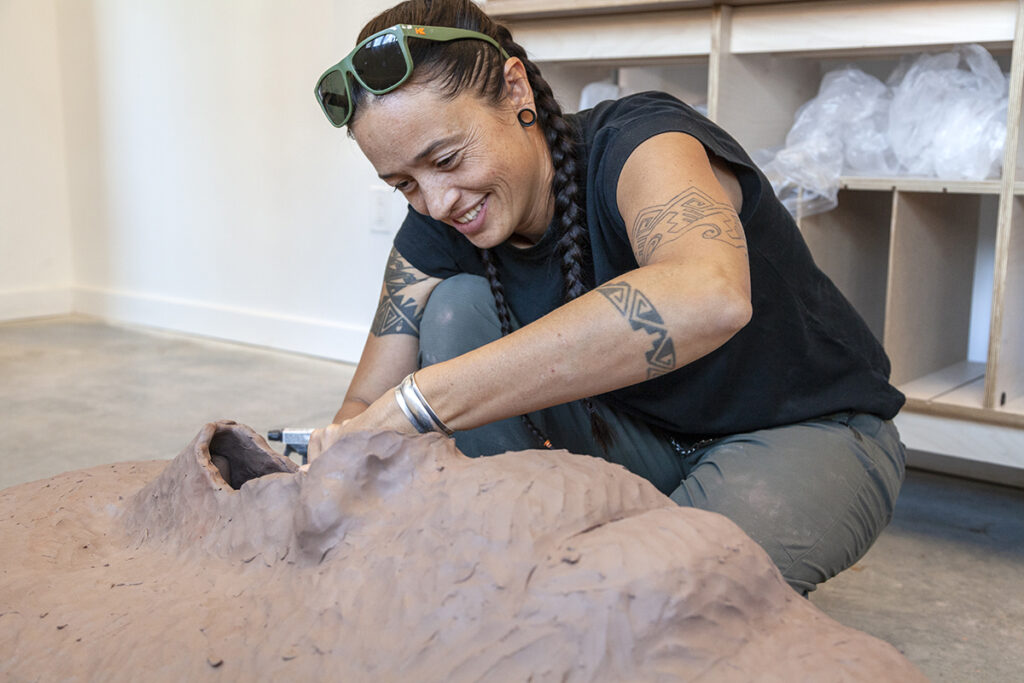
Rose B. Simpson (b. 1983) is a Tewa (Santa Clara Pueblo) sculptor who works primarily in ceramic. Her works often approach the past, present, and future as structured around the matrilineal line. She herself comes from a line of women ceramic artists. Her style is recognizable in the ‘Slap-Slab’ technique in which she assembles her pieces using small slips of clay, leaving the pieces and her own motions—brushstrokes, fingerprints, markings—evident and visible. Her figures are often post-apocalyptic, considering Native American survival in the wake of the climate emergency.
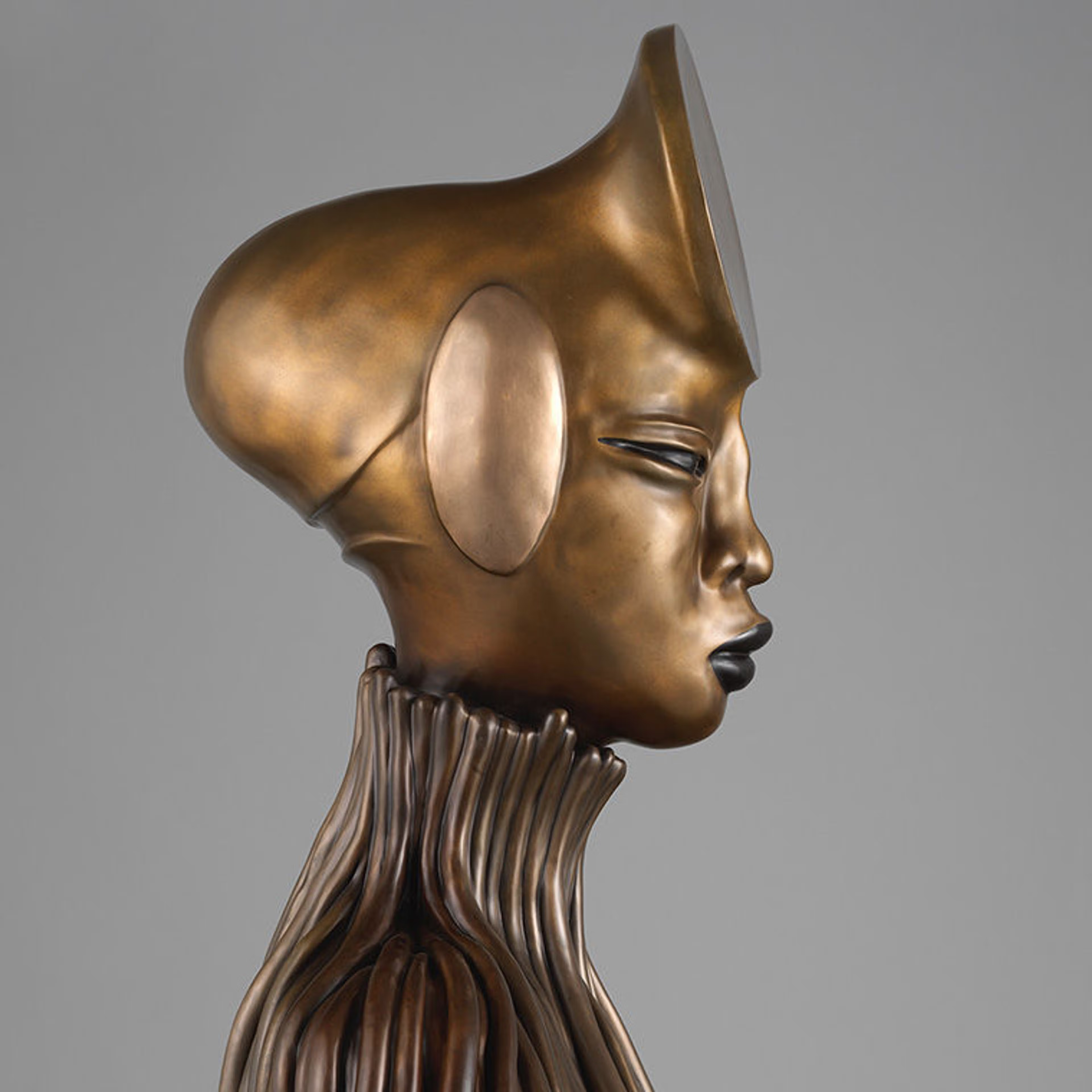
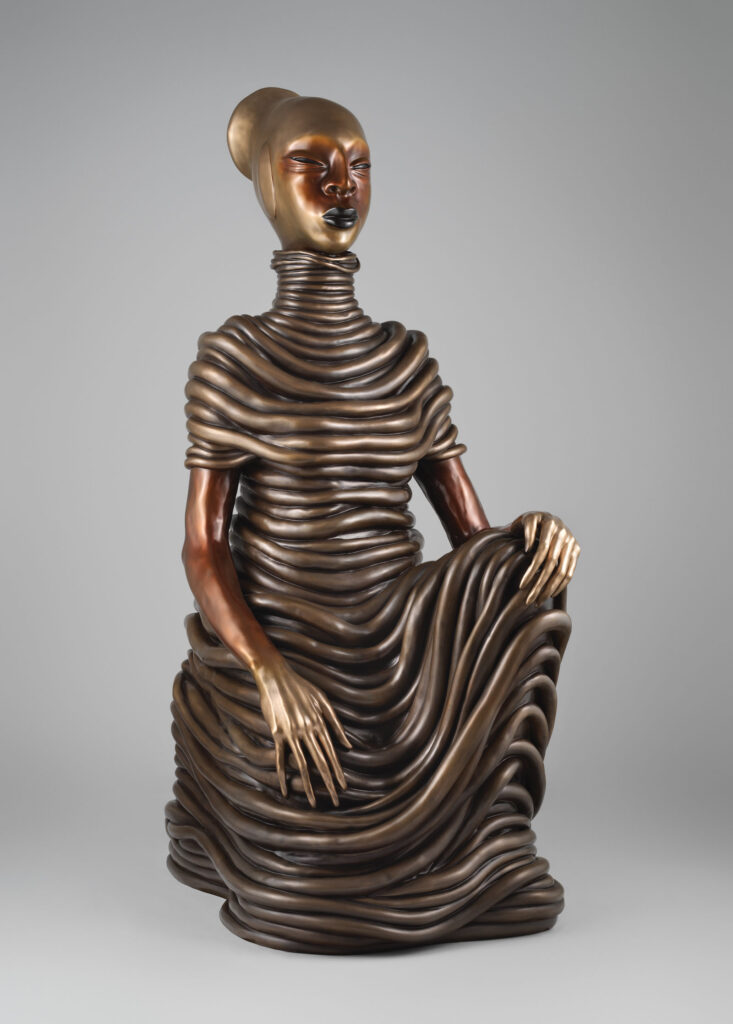
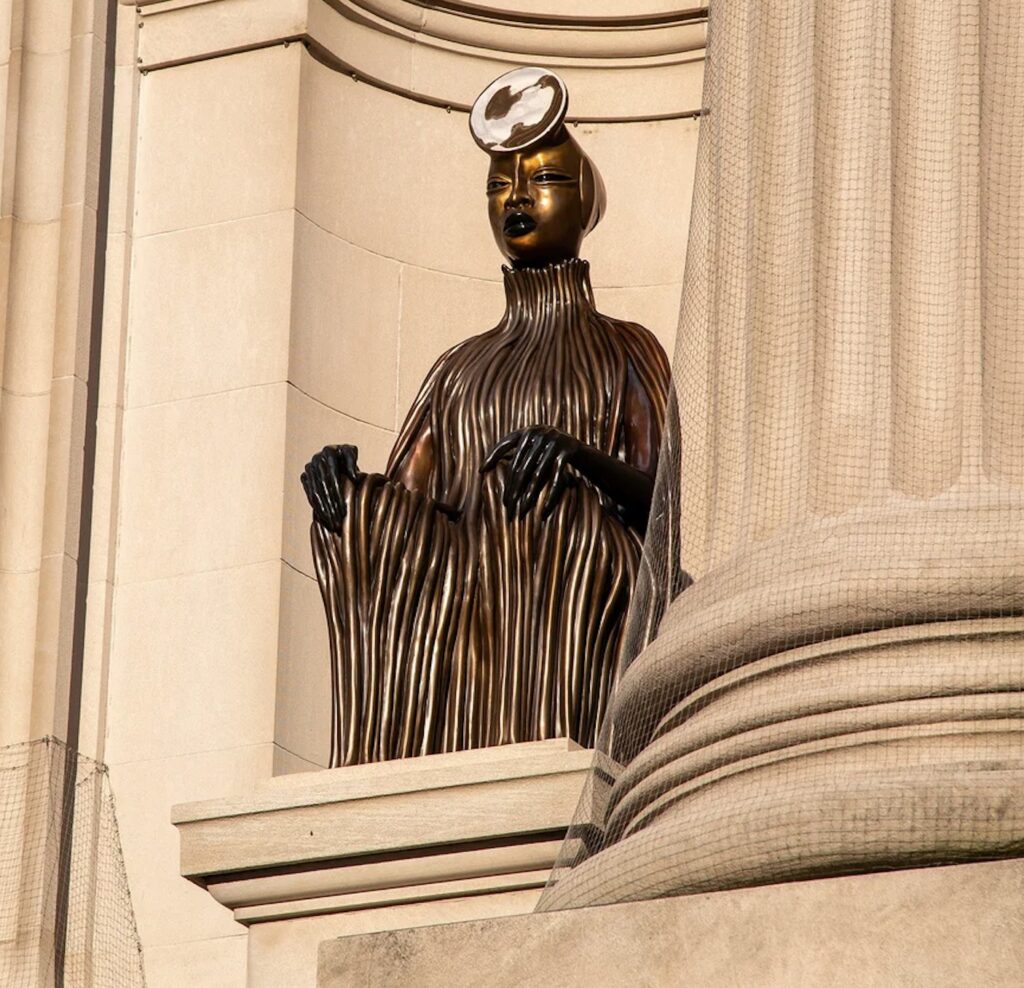
Expand to learn more
These are some of Wangechi Mutu’s series The Seated (2019). This series, commissioned for The Met facade exhibition The NewOnes, will free Us, features four seated bronze sculptures. The photo on the right shows one of The Seated in The Met niche.
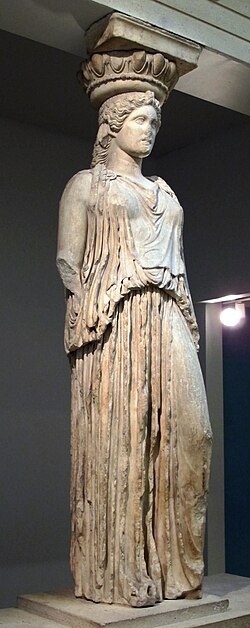
These sculptures are caryatids, statues that serve both as physical support and decoration, historically used in ancient temples such like the one on the left. Mutu’s caryatids however, take on no literal physical support of The Met’s facade. Rather, their presence reminds us that institutions like The Met have been build off of Black art, Black aesthetics, and the labor of Black bodies that have gone unrecognized for too long.
The title of the exhibition proclaims that these NewOnes are here to free Us. By capitalizing ‘Us’ Mutu makes me wonder, who—or what—are the NewOnes here to free?
About the artist
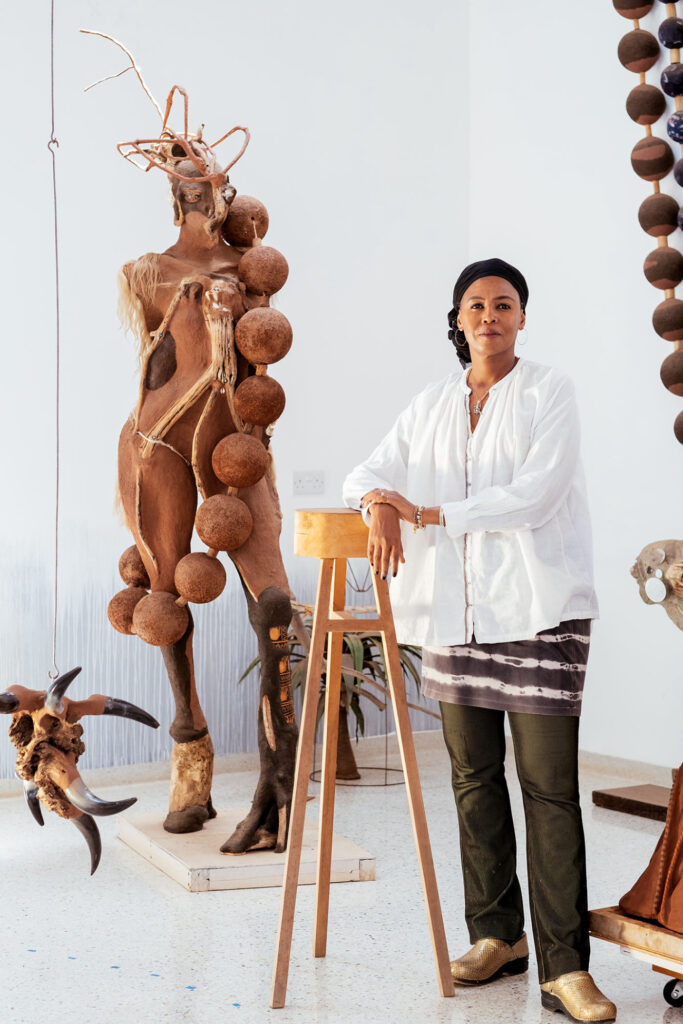
Wangechi Mutu (b. 1972) is a Kenyan visual artist who began working with collage before moving towards sculpture in more recent years. She currently splits her time between Nairobi, Kenya and New York City. Much of her work deals with the legacies of colonization and a type of trauma she names as “anglophone trauma”. Her work tends to focus on women and the female body, particularly the Black, African woman’s body. Stylistically, she is considered part of the Afrofuturist movement.